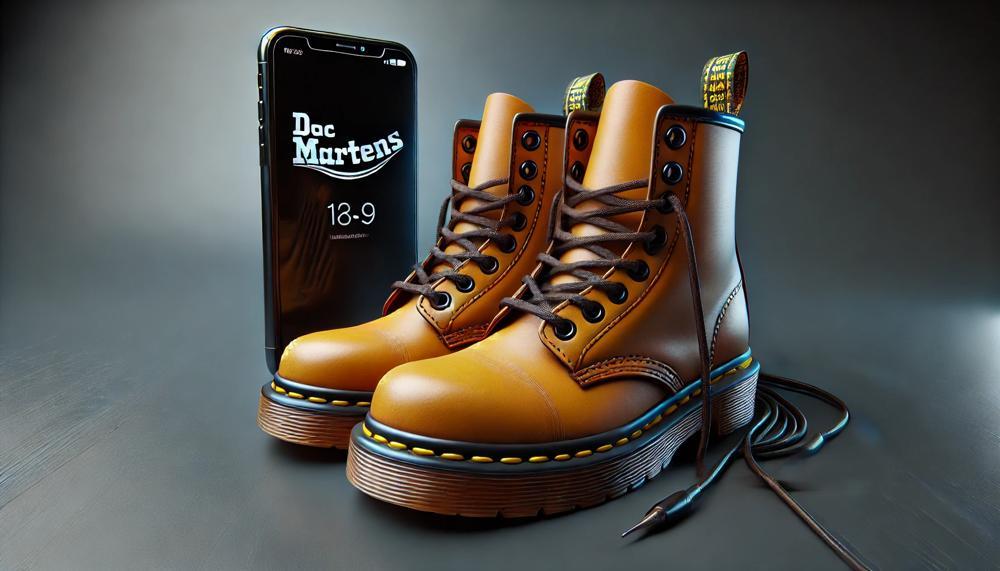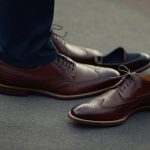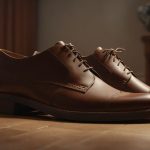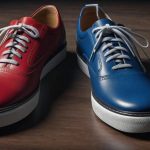Yes, Doc Martens Are Slip Resistant
Doc Martens, renowned for their iconic style and durability, also boast impressive slip-resistant properties. Whether you’re navigating slick restaurant floors or simply walking on wet pavement, these shoes are designed to keep you steady. Their slip resistance is primarily due to their sturdy PVC soles, which offer excellent traction on a variety of surfaces.
Key Takeaways:
- PVC Soles: Doc Martens feature robust PVC soles that provide superior grip and traction, reducing the risk of slips and falls.
- Workwear Line: For those needing extra assurance, Doc Martens’ Workwear line is specifically tested and certified to meet industry standards for slip resistance.
- Durability: Beyond slip resistance, these shoes are known for their longevity, thanks to their Goodyear welt construction, ensuring they remain reliable under heavy use.
In summary, if slip resistance is a priority for you, Doc Martens are a solid choice, blending style, durability, and safety in one iconic package.
Are Doc Martens Certified Non-Slip?
Contents
To determine if your Doc Martens are certified as non-slip, you should consider the specific model and its features. Here’s a straightforward method to check:
- Model Identification: Identify the specific model of your Doc Martens. The product details can usually be found inside the shoe on the tongue label or the side wall.
- Product Specifications: Check the Doc Martens official website or consult the product packaging. Look for terms like “slip-resistant” or specific certifications such as the ASTM F1677-05 standard mentioned for their Workwear line.
- Sole Design: Doc Martens with GripTrax soles are designed to offer enhanced slip resistance on various surfaces. These soles are thick and made of PVC, known for their good grip.
- Direct Inquiry: If information is not readily available, contacting Doc Martens’ customer service can provide direct answers regarding the slip resistance certifications of your specific shoe model.
Here’s a table that helps identify key aspects to check for slip resistance in Doc Martens shoes:
| Feature | Details to Check | Example Models |
| Slip-Resistant Label | Look for terms like ‘slip-resistant’ or specific standards (e.g., ASTM) | Workwear line |
| Sole Type | Check for GripTrax soles or similar technology | 1460 Slip Resistant, 2976 Chelsea Slip Resistant |
| Material | PVC soles known for traction and durability | Any featuring PVC soles |
By following these steps, you can confidently determine if your Doc Martens meet the slip-resistant criteria suitable for both everyday wear and specific work environments.
Are All Docs Slip Resistant?
Not all Doc Martens boots and shoes are inherently slip-resistant. However, specific models like the 1460, 1461, and 2976 are designed with GripTrax soles, making them highly effective on slippery surfaces.
This quality is crucial, particularly for those who need dependable footwear in potentially hazardous environments, such as kitchen staff or anyone working in wet conditions.
The use of air-cushioned soles with advanced groove designs has become a standard for newer models post-2001, ensuring better slip resistance compared to earlier designs.
To ensure that all Doc Martens shoes you consider are slip-resistant, follow these actionable steps:
- Check the Model: Refer to product details online or consult in-store staff to confirm if the model features the GripTrax technology.
- Examine the Soles: Look for the distinctive groove patterns characteristic of GripTrax soles, which are designed to provide superior traction.
- Ask for Certification: Request information from customer service or look for labeling on the shoe that certifies the footwear as slip-resistant.
Below is a helpful table to guide you in identifying which Doc Martens models are slip-resistant:
| Model | Slip Resistant | Features |
| 1460 | Yes | Air-cushioned GripTrax soles |
| 1461 | Yes | Enhanced groove design |
| 2976 | Yes | Patented non-slip technology |
Are Doc Martens Good for Rain?
Yes, Doc Martens can withstand wet and slippery conditions. This capability stems from their innovative Grip-Trax soles, which feature water-dissipation lines specifically engineered to enhance traction on slick surfaces.
Doc Martens are well-known not just for their iconic style but also for their robust construction, which includes the use of high-quality, water-resistant leather. The effectiveness of Doc Martens in wet conditions can be credited to their air-cushioned soles and reinforced stitching, making them suitable for various environments, from rainy city streets to slippery workplace floors.
The table below details some key features of Doc Martens that support their performance in adverse conditions:
| Feature | Description | Benefit |
| Grip-Trax Soles | Soles designed with specific water-dissipation lines | Increases traction, reducing slip risks on wet and slick surfaces |
| Water-resistant leather | High-grade leather treated to repel water | Keeps feet dry and comfortable in wet weather |
| Air-cushioned soles | Signature technology in sole construction | Provides extra comfort and shock absorption, useful in harsh conditions |
For those who often face wet or icy conditions, choosing footwear with non-slip features is crucial. Doc Martens not only meet this practical requirement but also offer a blend of durability and style, making them a top choice for individuals looking for reliable, all-weather boots.
Are Dr. Martens Good for Snow?
| Question: | Can Dr. Martens withstand snowy and slippery conditions? | |
|---|---|---|
| Answer: | Dr. Martens are designed to excel in snowy and slippery conditions due to their slip-resistant air-cushioned soles. These boots feature a specially designed tread pattern that provides excellent grip and traction on various surfaces, including wet and icy ones. | |
| Explanation: | The slip resistance of Dr. Martens is primarily attributed to their signature air-cushioned sole, which not only enhances comfort but also offers reliable traction. The sole’s deep grooves effectively channel away water and snow, reducing the risk of slipping. Moreover, the PVC material used in the sole is naturally waterproof, adding an extra layer of protection against wet conditions. | |
| Insights: | Independent testing by organizations like SATRA and ASTM International confirms Dr. Martens’ high level of slip resistance on various surfaces, including those affected by snow and ice. While these boots minimize the risk of slipping, it’s important to exercise caution in extreme conditions where no footwear can guarantee complete slip-proofing. |
Dr. Martens’ ability to withstand snowy and slippery conditions stems from their slip-resistant air-cushioned soles, providing excellent traction and grip on wet and icy surfaces.
Are Doc Martens Non-Slip for Restaurant?
Doc Martens stand out for their notable slip resistance, especially designed for workers in demanding environments like restaurants. Models like the 1460, 1461, and 2976 boast the GripTrax technology which is engineered specifically to provide superior traction on slippery surfaces, making them a strong choice compared to other common restaurant footwear.
In a direct comparison, here’s how Doc Martens stack up against other popular restaurant shoes:
| Shoe Brand/Model | Slip Resistance Features | Suitability for Restaurant Use |
| Doc Martens 1460 | GripTrax Sole, air-cushioned | Highly suitable for long shifts, exceptional grip on wet and oily floors |
| Generic Restaurant Clogs | Standard non-slip sole | Suitable, though often less durable and without added comfort features |
| Specialized Restaurant Shoes | Enhanced non-slip sole, ergonomic design | Very suitable, but can be more expensive with varied durability |
Doc Martens’ GripTrax soles provide a significant advantage, especially noted in customer feedback, where wearers report reliable traction not only in restaurant settings but also on surfaces like dance floors and icy paths. The re-engineered soles since 2001 enhance this effect, making them a top pick for safety-conscious restaurant workers.
Additionally, the heavier Jadon model, while less common for prolonged standing shifts, still offers robust slip resistance with the same GripTrax technology.
For optimal performance, scuffing the soles on rough surfaces as a break-in strategy is recommended, improving their grip further.
Are Doc Martens Good for Standing All Day?
Doc Martens boots fare exceptionally well for all-day wear, thanks to their unique design and build. Compared to other footwear, Doc Martens stand out for their comfort and support, crucial for anyone standing long hours.
Key Features of Doc Martens:
- Air-Cushioned Soles: Provides excellent cushioning and shock absorption, a relief during extended standing periods.
- GripTrax Technology: Ensures superior grip on slippery surfaces, making them safer than many other shoes in challenging environments.
- Leather Build: Though initially firm, the leather softens and conforms to the shape of your foot, offering a personalized fit.
Comparison Table:
| Feature | Doc Martens | Other Shoes |
| Air-Cushioned Soles | Yes | Varies |
| Grip on Slippery Surfaces | Excellent (GripTrax) | Often Moderate |
| Leather Quality | High (Adapts to foot) | Typically Rigid |
| Initial Comfort | Requires Break-In | Typically Immediate |
| Long-Term Support | Superior | Can Diminish |
While some shoes might offer immediate comfort without a break-in period, they often lack the long-term support and custom fit that Doc Martens provide as the leather molds to your feet. This makes them a robust choice for professionals like chefs, nurses, and retail workers who spend many hours on their feet.
Additionally, the consistent quality and durability of Doc Martens often outshine competitors, ensuring they’re not just a purchase but an investment in foot health and comfort.
How Do You Keep Doc Martens from Slipping?
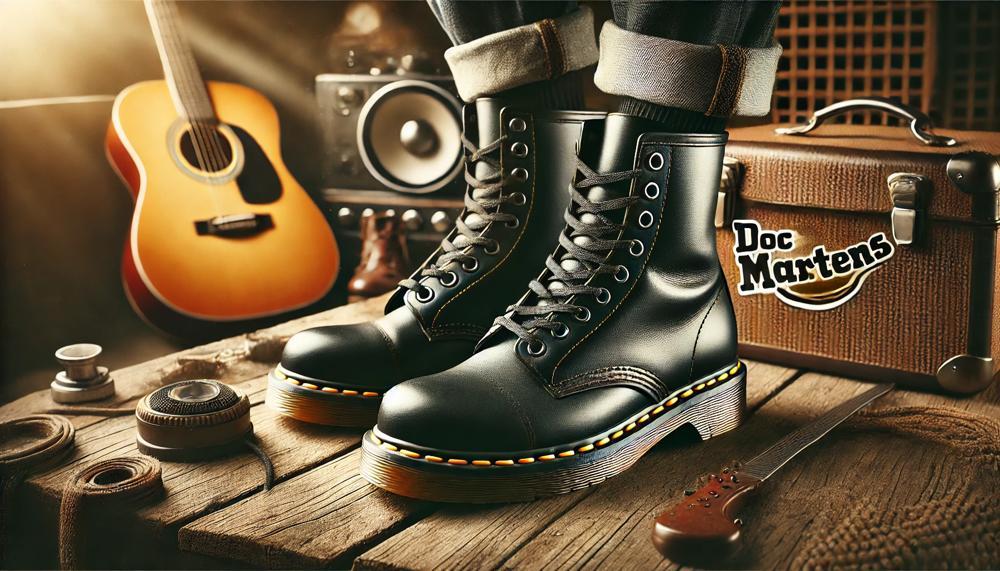
There are several effective methods to prevent Doc Martens from slipping:
| Method | Description | Effectiveness |
| GripTrax Technology | Utilise patented slip-resistant soles available in many Doc Martens models. | High |
| Scuff the Soles | Walk on rough surfaces to create a textured grip. | Medium |
| Traction Sprays | Apply sprays designed to enhance grip on slick surfaces. | High |
| Ice Grips | Attach devices for improved traction on ice and snow. | Very High |
| Traction Pads | Add adhesive pads to the soles for extra grip. | Medium |
| Salt or Sand | Scuff the soles with coarse materials. | Medium |
Conclusion
Doc Martens are more than just a fashion statement; they’re a reliable choice for slip-resistant footwear. These iconic boots, known for their durability and style, are equipped with robust PVC soles, ensuring excellent traction on various surfaces, from wet pavements to slick restaurant floors. The standout feature, their GripTrax soles, are specially engineered to enhance grip, making them ideal for both everyday wear and demanding work environments.
The Workwear line takes this a step further, being rigorously tested to meet industry standards for slip resistance, offering extra assurance for those in high-risk jobs. Key models like the 1460, 1461, and 2976 showcase this slip-resistant technology, making them highly effective on slippery surfaces.
Moreover, Doc Martens’ construction, featuring Goodyear welt stitching, ensures longevity and reliability under heavy use. The high-quality, water-resistant leather and air-cushioned soles provide additional comfort and protection, making these boots suitable for wet conditions, including rain and snow.
For those needing to confirm the slip-resistant capabilities of their specific Doc Martens model, checking the product specifications, examining the sole design, or directly inquiring with customer service are recommended steps.

